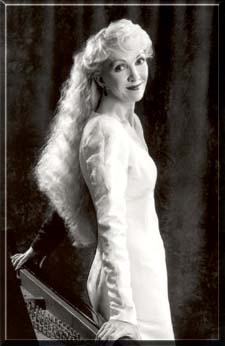|

"BRILLIANT MUSIC PLAYED BRILLIANTLY"
The Sun: Nashville, TN
By Dr. David Hendricksen

"Common and uncommon. Those two words characterize many of the aspects of Friday night's superb piano recital at the Annie Hogan Byrd Auditorium. Pianist Teresa Walters has performed in the major concert halls of the world, and has recorded award winning CD albums. She presented a program of Beethoven, Gershwin and Liszt.
It is common to see the tall, blonde figure of our Arts Director at events in the area, as indeed she was present to introduce the artist at Friday's recital. But it is uncommon to see two such tall, blonde women. Audience members might have understandably thought that the two women were sisters, though in fact, they are not related.
It is common on solo programs to see music of Beethoven. But it is uncommon to hear the
Seven Variations on a National Song. The song in question is the tune known to most in the United States as "My Country 'Tis of Thee" but in this context, Beethoven was considering that same tune in its role as the British national anthem. As a composer, Beethoven used the variation form as a means of taking apart the musical materials of the original tune and harmony, and constructing new music from elements of the original.
If the composer Beethoven used variations as a means to see how much music he could draw forth from the simple tune, the pianist Beethoven used variations to demonstrate his mastery of the keyboard. In Teresa Walters' hands, we were able to get a sense of the excitement of Beethoven the pianist, with controlling nuances of dynamics from softest to loudest, fast fingerwork, clear articulation, delicacy and power.
It is not common for recitalists to speak with their audiences, but happily, Walters did not follow this convention. In her illuminating comments between selections she brought those present into the context for hearing the music presented, and understanding something of the motivation of the composers who produced that music. She pointed out that Beethoven was a great champion of freedom and human rights, and a great admirer of what was then still the young American experiment in democracy. And it was to American music that she turned next.
George Gershwin was an American composer who combined elements of the European classical music tradition with aspects of American popular music of the time, and of the burgeoning jazz culture. His most famous composition, the
Rhapsody in Blue, is often heard in a version for orchestra and piano, but Gershwin also composed a version for solo piano, which Walters presented so masterfully on Friday. Walters' playing highlighted the contrasts between sections which were bold and brassy, playful, lyrical, and even delicate, all the while controlling the multiple layers of rhythmic activity based in the jazz of which Gershwin was so fond.
We were treated after intermission to another rhapsody, this time the Hungarian Fantasy by composer Franz Liszt. In the l9th century, Liszt was internationally known as the most virtuosic pianist alive. He wrote and played music of breathtaking difficulty, and in turn inspired generations of pianists ever since to achieve the technical skills needed to present this challenging music. As its title implies, the
Hungarian Fantasy draws on rhythms and melodies of Hungarian and Gypsy folk music. As Walters explained, Liszt lived a long and active life - one aspect of which was his constant love for his native land. He frequently presented benefit concerts to aid those in need in Hungary.
St. Francis of Assisi is well known not only for his life of faith and the beautiful prayer that bears his name, but also as a lover of nature as being God's good creation. His
Canticle of the Sun is the inspiration for the concluding work on the recital, again by Liszt. Ms. Walters preceded the playing of the work with a recitation of the text of the canticle, which provided a verbal context for the rich variety of sounds and musical textures Walters provided for us. Both of the major Liszt works featured brilliant transitional passages that are themselves as significant as the sections they bridge. Walters' pacing and dynamic nuance provided a clear sense of the musical structures we heard.
Often overlooked as an element of music is silence. In key places in the Gershwin and in the two Liszt works, Walters used silence very effectively - not merely the negative absence of sound, but the positive palpable presence of silence to articulate critical junctures in the music.
Following the Liszt Canticle of the Sun, the audience responded with a standing ovation, and Walters in turn, responded with an encore - her own arrangement of
The Navy Hymn. As she explained, it is not just in recognition of the tragedy of last September, but also a statement of hope as we look toward the future."
Return
to Critical Acclaim

|